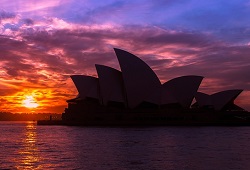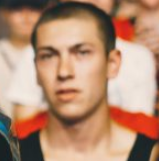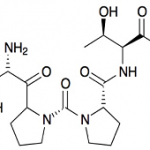New Ice Treatment Results Six Times Better than Rehab

Detoxification and rehabilitation are both traditional avenues of remedying addiction. They have somewhat worked for the past couple of years. The “Land Down Under” has, however, offered an even better solution. The Aussies have made significant progress from an ice treatment program. Their alternative not only works but also works with six times the effectiveness.
To put those figures into perspective, we’ll talk about a story of salvation. The tale of 28-year-old former methamphetamine addict Nicole Bowering. She, like 183 other ice users, found her saving grace in the 5-month Matrix Model. For years, she sought the thrill of underhand prescriptions. Her watershed moment came when she lost her fingers to her addiction.
Desperate to leave the highway of ill fate she was on, Nicole gave the Matrix program a try back in March of 2017. It’s safe to say she made the right choice. Within a month of starting out, she was able to steer clear of all form of drugs. She was also able to quit gambling and alcohol.
While her damaged fingers were beyond saving, Nicole herself wasn’t. She has put her life together mending relationships and bridges her addiction broke. Nicole has even carved out a career in helping others struggling in similar shoes. She graduated the Matrix program the year after and is now a part of the PsychMed team. A team that holds the hands of those looking to the Matrix for help.
For close to two years, she hasn’t indulged in any unwarranted drug use. Every waking day is another line she looks forward to adding to her clean track record.
Why Families Should be Upbeat over Trials
48% of the trial sample showed whatever drugs they were using the door. Moreover, three-quarters of the group cut down on usage by up to five days. Family education, relapse prevention, social support, Narcotics Anonymous sit-downs and meditation proved effective. The trio days of weekly individual and group sessions have played a pivotal role as well. Relapse prevention, in particular, works splendidly and encompasses out-of-the-blues urine tests. Results thereafter are not a battering ram of condemnation. They are a reference point to do better.
Quentin Black is a member of the leading team at the program. He says the Matrix means a lot to the individuals and those around them. It helps them replace despair with hope. An infectious hope that radiates across communities in their entirety.
Quentin says the program provides a solution to a problem affecting all walks of life. 29-year-old Matt Mabarrack is living proof of that sentiment. He tried and failed to break free of the handcuffs of his ice addiction on his own. Fortunately, he found the help he craved with the ice treatment matrix. With a desire to return to the happy life that had since eluded him, Matt is through 6 of his 20-week journey.
How the Matrix fares against Conventional Programs
According to Dr Black, monetary support is very low. Of the funding kitty available, community-focused services like Matrix receive only bread crumbs. Residential rehabilitation, drug substitution and traditional programs get 99% of the budget.
Those numbers in no way reflect the effectiveness of each option. The latter’s 12% success rate is low compared to the former’s which stands at almost 50% at the moment. Dr Black believes a common misconception is to blame for the current state of affairs. He says contemporary services such as Matrix are wrongly construed as “too expensive”.
This is not the first time the Matrix has been used before. The 1986 US Matrix designed to overcome cocaine addictions inspired Australia’s version. The maiden 4-month pilot program has proved very successful. So much so that the State Government has pledged to roll out the program on a regional scale. As we speak, there’s a program slated for Brisbane and another for Perth. Future considerations also include North Queensland and South-east Melbourne. The Blue Mountains, NSW central coast and Sydney’s western suburbs are also in the spotlight.
A Nationwide Conundrum
1.4% of participants of a data collection survey attested to having used methamphetamine within the past year. An extra 5% of those aged 14 and above affirmed to usage at one point in their life. A dozen years ago, ice or crystal meth usage- ice being the purest form of the insanely addictive drug- stood at 26.7%. The percentages have now doubled which goes to show how dire things are.
Further government reports have highlighted Adelaide as the ice mecca of the country. It thus didn’t come as much of a surprise that the maiden Matrix program took root there.
These figures from the country’s Health and Welfare Institute don’t look good. The Matrix program will seek to change that one life at a time.






